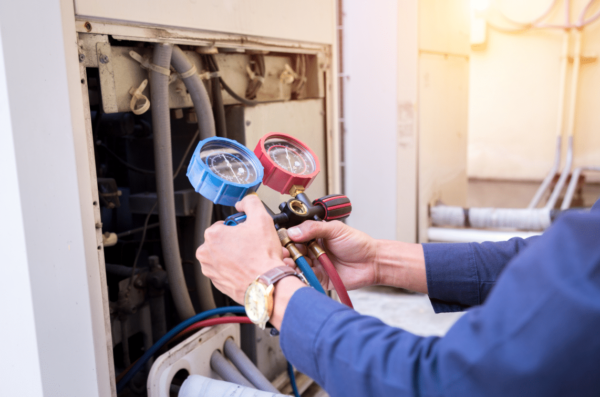After your home is damaged, your insurance company may respond to notice of a claim with a property inspection. They will hire a third-party inspector to examine the property damage and note any issues or concerns that may impact policy coverage. The adjuster will have their own home inspection checklist, something they will use to assess the damages which will then be used to calculate your settlement.
Generally speaking, the inspector will be looking for four things:
- The total scope of the damage and the needed repairs.
- Undeclared structural components that could affect the estimated replacement value
- Whether the homeowner has taken steps to prevent further damage.
- Whether the damages might include uncovered losses, such as if the inspector deems the structure of the home has been neglected.
The inspector does not necessarily have the final say in whether or not your loss will be covered, but the insurance company will put a lot of stock in their findings. As such, be prepared in advance, and know how to respond to specific findings that can affect your claim.
If you disagree with your homeowner’s insurance company or are worried about covering repairs, talk to an experienced property damage lawyer near you. Steinger, Greene & Feiner can provide you not only with legal guidance but also a free 10-point inspection that can help you fully assess damages and estimate the costs of repairs. You will be paired with a local inspector that will use their home inspection checklist to ensure you get the most for your damages.
Call (800) 4560-5059 or contact us online to schedule a free, no-obligation case evaluation today.
You can also use the following information to know what an inspector will look for and what you can do to maximize your chances of receiving full coverage for your losses.

Assessing the Full Scope of Damages to the Home’s Structure and Contents
 The insurance inspector will be familiar with structural engineering and home repairs. When they arrive at the home, they will assess the full extent of repairs needed to restore the property to its original value.
The insurance inspector will be familiar with structural engineering and home repairs. When they arrive at the home, they will assess the full extent of repairs needed to restore the property to its original value.
For instance, if you have water damage from a roof leak, it may go well beyond replacing the carpet and the wallpaper. Your home could have sustained damage to its studs or floor joists, requiring more extensive repairs than what can be revealed at first glance.
Understanding the full scope of repairs is particularly important when it comes to your home’s roof and major systems, like HVAC, plumbing, electrical, and drainage.
The inspector will calculate how far the damage reached, which components need to be replaced, and estimate how big of a project complete repairs will be.
The insurance adjuster will also want to review any claimed losses related to the home’s contents, i.e. your appliances and personal belongings. It is best to have a complete list of lost items for them to review, along with proof of your losses, such as photos or the damaged items themselves. Make this part of your own home inspection checklist.
Uncovering Undeclared Home Components
 It is crucial that you thoroughly declare every aspect of your home’s structure and contents when signing a homeowner’s insurance policy. If you overlook something, you run the risk of this item being uncovered in the inspection.
It is crucial that you thoroughly declare every aspect of your home’s structure and contents when signing a homeowner’s insurance policy. If you overlook something, you run the risk of this item being uncovered in the inspection.
For example, a tree fell through your kitchen and cracked a granite countertop. If you didn’t note in the policy that the counter was granite, the policy may only provide coverage for a standard, lower-quality replacement.
By the time the claim has been filed and the inspector comes, it is too late to add or subtract to coverage that applies to this particular incident. But the inspector will want to note any inconsistencies in the described covered items so that the total cost of repairs can be adjusted according to the original estimated replacement value.
Protecting the Home From Further Damage
 After property damage occurs, you have a responsibility to take any reasonable steps possible to prevent further damage to the home. If you have a gaping hole in the roof, for instance, the insurance company may expect you to cover the hole with plywood and protect it with a tarp. (Learn more about understanding your roof damage and how it affects your claim.)
After property damage occurs, you have a responsibility to take any reasonable steps possible to prevent further damage to the home. If you have a gaping hole in the roof, for instance, the insurance company may expect you to cover the hole with plywood and protect it with a tarp. (Learn more about understanding your roof damage and how it affects your claim.)
If the inspector has advice for protecting the property before full repairs are made, they will share it. However, they may also note if your failure to take reasonable steps resulted in further, preventable damages. These damages may not be covered in full by the claim, or they may provide leverage for the insurer to deny the claim altogether.
You and a property damage lawyer can examine any arguments used to deny or reduce coverage and respond accordingly with a request for coverage as promised in the policy language.
Looking Out for Neglect, Fraud, or Other Policy Exclusions
 A critical task the insurance representative will be performing is looking for red flags that can cause the property damage claim to be rejected altogether. If, for example, they have a strong suspicion that a section of the property had sustained water damage repeatedly long before the reported incident, they will notify the insurance company of possible structural neglect.
A critical task the insurance representative will be performing is looking for red flags that can cause the property damage claim to be rejected altogether. If, for example, they have a strong suspicion that a section of the property had sustained water damage repeatedly long before the reported incident, they will notify the insurance company of possible structural neglect.
An adjuster will also report any signs that the claimant is attempting to defraud their insurer, such as if some damages look like they occurred after a storm passed.
Finally, and perhaps most importantly, the adjuster will be watching out for reasons that the damage might not be covered. For example, some water damage caused by storms or ruptured plumbing will be covered, but anything that’s technically considered “flooding” won’t. This can come down to technical arguments, such as whether water flowed in through windows instead of through cracks in the walls caused by fallen trees.
Because the inspector can uncover information that leads to your claim being denied, avoid saying anything that can raise suspicion. Don’t suggest that you’re partially to blame for some damage occurring, such as saying, “I knew that tree might fall any day,” or, “I tried to stop the water pooling but I made it worse.”
Statements like these can give your insurer an excuse not to cover your damages. You can follow the home inspection checklist to the letter, but mess up by offering erroneous details or exaggerating. So rather say as little as possible. Just let the inspector do their work.
Additionally, be sure to read your policy or request a new one.
“Do your best to read your policy over and over until you have a basic understanding of what’s in it. If you don’t have a complete and current copy, ask for one (in writing) and make sure you and the company adjuster are working off the same document.” (United Policy Holders)
You can also have your lawyer look at your policy if you decide to contact one.
Call an Experienced Property Damage Lawyer If You’re Worried About Your Inspection
If you want to prepare for a home inspection or are worried about findings from your home inspection, speak to an experienced property damage lawyer team.
Steinger, Greene & Feiner has years of experience helping everyone from people whose homes were hit by hurricanes to victims of burglary. We can help you handle your home insurance claim, respond to common insurer objections, and seek the maximum amount of coverage available for all of your losses.
Learn more about your rights as a policyholder and what you can do to make a reasonable settlement more likely during a free, no-obligation case review when you call (800) 4560-5059 or contact us online.


